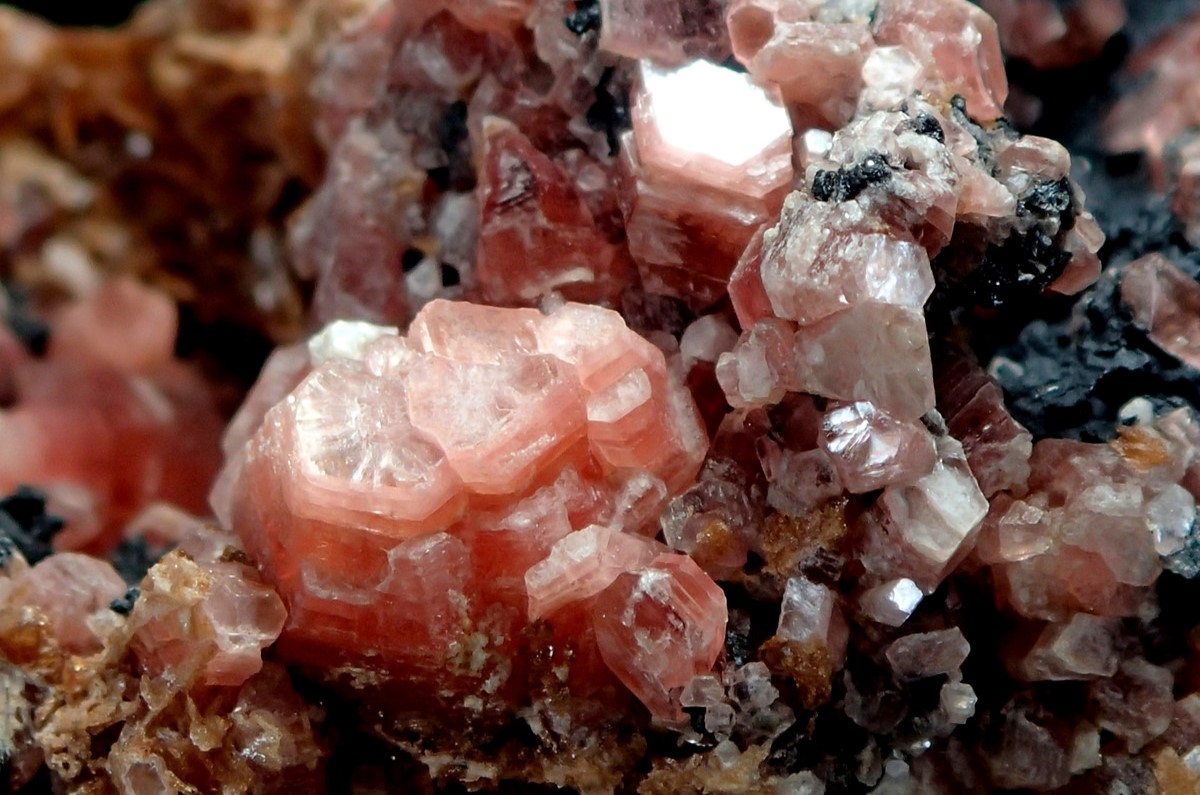
Ephesite is a rare and captivating mineral that has intrigued geologists and collectors alike. Found primarily in metamorphic rocks, this mineral boasts a unique composition and striking appearance. Ephesite is known for its vibrant colors, often showcasing shades of green, blue, and yellow. Its crystal structure is complex, making it a subject of study for mineralogists. Beyond its beauty, Ephesite holds significant scientific value, providing insights into the geological processes that shape our planet. Whether you're a seasoned collector or a curious newcomer, these 30 facts about Ephesite will deepen your appreciation for this extraordinary mineral.
Key Takeaways:
- Ephesite, a rare mineral with a unique chemical composition, is named after the ancient city of Ephesus in Turkey. It has a distinctive pink to reddish-brown color and is highly sought after by mineral collectors.
- Ephesite forms in specific geological settings, such as lithium-rich pegmatites and metamorphic rocks. While not widely used, it has significance in scientific research and as an indicator mineral for locating lithium deposits.
What is Ephesite?
Ephesite is a rare mineral that belongs to the mica group. It has a unique chemical composition and fascinating properties. Let's dive into some intriguing facts about this mineral.
- Ephesite is named after the ancient city of Ephesus in Turkey, where it was first discovered.
- Its chemical formula is NaLiAl2(Si2Al2)O10(OH)2.
- This mineral typically forms in metamorphic rocks, especially those rich in lithium.
- Ephesite is part of the mica group, which includes other well-known minerals like muscovite and biotite.
- It has a monoclinic crystal system, meaning its crystals form in a specific geometric pattern.
- The color of ephesite ranges from pink to reddish-brown, making it quite distinctive.
- It has a pearly to vitreous luster, giving it a shiny appearance.
- Ephesite has a Mohs hardness of 2.5 to 3, making it relatively soft compared to other minerals.
- This mineral is often found in association with other lithium-rich minerals like spodumene and lepidolite.
- Ephesite is not commonly used in jewelry due to its softness and rarity.
Where Can You Find Ephesite?
Ephesite is not a mineral you stumble upon every day. Its occurrences are limited to specific geological settings.
- The primary locality for ephesite is the Ephesus region in Turkey.
- It has also been found in the Ural Mountains of Russia.
- Some occurrences have been reported in the United States, particularly in California.
- Ephesite is often found in lithium-rich pegmatites, which are coarse-grained igneous rocks.
- It can also be found in metamorphic rocks that have undergone high-pressure and low-temperature conditions.
- The mineral is typically extracted through mining operations in these specific regions.
- Due to its rarity, ephesite is highly sought after by mineral collectors.
What Are the Uses of Ephesite?
While ephesite is not widely used in commercial applications, it has some interesting uses and significance.
- Ephesite is primarily valued by mineral collectors for its rarity and unique properties.
- It is sometimes used in scientific research to study the geological processes that form lithium-rich minerals.
- Ephesite can also be used as an indicator mineral in geological surveys to locate lithium deposits.
- Its unique chemical composition makes it a subject of interest in mineralogical studies.
- Ephesite's distinctive color and luster make it a fascinating specimen for educational purposes.
How is Ephesite Formed?
The formation of ephesite involves specific geological conditions and processes.
- Ephesite forms in lithium-rich environments, often in pegmatites and metamorphic rocks.
- The mineral crystallizes from hydrothermal fluids that are rich in lithium, sodium, and aluminum.
- High-pressure and low-temperature conditions are essential for the formation of ephesite.
- The presence of other lithium-rich minerals like spodumene and lepidolite can facilitate the formation of ephesite.
- Ephesite can also form through the alteration of other mica minerals in lithium-rich environments.
What Are the Physical Properties of Ephesite?
Ephesite has some unique physical properties that make it stand out among other minerals.
- Ephesite has a specific gravity of 2.8 to 3.0, which is relatively low compared to other minerals.
- It exhibits perfect cleavage in one direction, meaning it can be easily split along specific planes.
- Ephesite is transparent to translucent, allowing light to pass through it to varying degrees.
Final Thoughts on Ephesite
Ephesite, a rare mineral, holds a unique place in the world of geology. Its striking colors and crystal formations make it a favorite among collectors and scientists. Found mainly in Russia, Ephesite's chemical composition includes sodium, aluminum, and silicon, which contribute to its distinct appearance. This mineral not only fascinates with its beauty but also provides valuable insights into geological processes. Understanding Ephesite helps researchers learn more about the Earth's history and the conditions that lead to the formation of such minerals. Whether you're a seasoned geologist or just curious about the natural world, Ephesite offers a glimpse into the complexities of our planet. So next time you come across this intriguing mineral, take a moment to appreciate its beauty and the stories it tells about the Earth's past.
Frequently Asked Questions
Was this page helpful?
Our commitment to delivering trustworthy and engaging content is at the heart of what we do. Each fact on our site is contributed by real users like you, bringing a wealth of diverse insights and information. To ensure the highest standards of accuracy and reliability, our dedicated editors meticulously review each submission. This process guarantees that the facts we share are not only fascinating but also credible. Trust in our commitment to quality and authenticity as you explore and learn with us.
